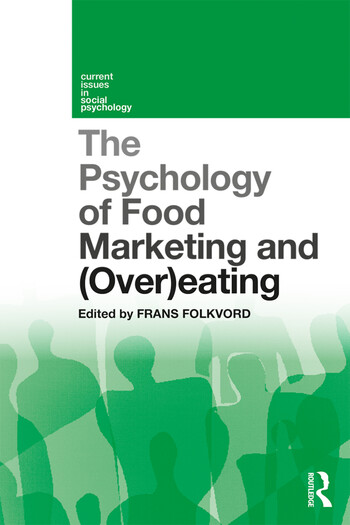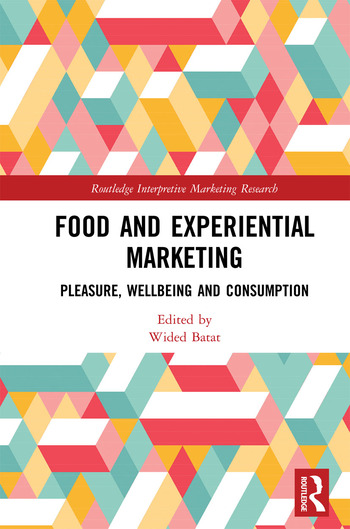Five Key Food and Drink Trends
Research showcases consumers’ priorities and preferences with regard to food and drink products, as well as grocery shopping behaviors

 Mintel released five key trends set to impact the U.S. food and drink market in 2015. Utilizing research, data and trends from across Mintel’s extensive product portfolio and expert analysis from Director of Innovation and Insight Lynn Dornblaser and Global Food and Drink Analyst Jenny Zegler, the research showcases consumers’ priorities and preferences with regard to food and drink products, as well as grocery shopping behaviors.
Mintel released five key trends set to impact the U.S. food and drink market in 2015. Utilizing research, data and trends from across Mintel’s extensive product portfolio and expert analysis from Director of Innovation and Insight Lynn Dornblaser and Global Food and Drink Analyst Jenny Zegler, the research showcases consumers’ priorities and preferences with regard to food and drink products, as well as grocery shopping behaviors.
As January draws to a close, many Americans find themselves in one of two categories: ditching their resolution or committing to a healthier lifestyle for the long haul. A look at the major food and drink trends occupying American dinner tables in 2015 tell the story of healthy lifestyles, “clean” ingredients, at-home gourmands, value consciousness and e-commerce specialty products.
It's not a diet, it's a lifestyle
Consumers are shunning restrictive fads in favor of a more holistic wellness approach. These more open-minded, health-conscious consumers are keeping an eye on the long-term, which makes them less fearful of the occasional splurge.
America’s battle with an expanding waist-line continues with diet and wellness listed first on the menu in 2015. While 56 percent of US consumers reference dieting in order to lose or maintain weight, most consumers prefer to count reps instead of calories (83 percent). When it comes to dieting, high-protein diets are the nation’s favorite. Forty percent of US consumers agree that food and drink products high in protein help users feel fuller longer, and 37 percent agree that protein assists with building muscle. In addition, the number of food and drink products launched with low/no/reduced fat, low/no/reduced sugar or low/no/reduced calorie claims decreased between 2013 and 2014, while the number of products with a high/added fiber claim or a high protein claim have risen.
According to Mintel research, “diet” has become a dirty word as consumers trade fad eating plans for a more holistic wellness approach. “These more open-minded consumers are keeping an eye on the long-term and are not afraid of the occasional splurge so long as it’s in moderation,” said Jenny Zegler, Global Food and Drink Analyst at Mintel. This year flexibility is key when it comes to eating and drinking habits, with consumers open to trying different healthy options.
‘Clean’ is the new ‘green’
Rather than the relatively intangible claim of being ‘good for the environment,’ the new priority is transparency. This is creating a new flock of consumers who want to know more about ingredients, products and the companies that make and sell them.
More nutrients on the plate is key heading into 2015, but consumers are concerned with the ingredients in each mouthful. Twenty-two percent of US grocery consumers would like to see improved labeling on packaging to help them easily identify healthier food products, and less than 38 percent trust what companies say on labels. Currently 80 percent of US consumers look for nutritional claims (i.e. vitamins, fiber) when buying food, while over one third (38 percent) look for products that are all natural. Food origin is also quickly becoming a purchase factor with 35 percent of consumers seeking out products that carry a local claim (i.e. from a local company/firm).
“Simply and effectively communicating benefits is essential for consumers and a big trend this year,” according to Lynn Dornblaser, Director of Innovation and Insight at Mintel. While ‘local’ is a great buzzword, provenance lets consumers know where products originated. Additionally, ‘clean’, ‘simple and ‘real’ are all being used on labels to introduce natural, no additives or preservatives. Dornblaser continues, “Brands should look to educate consumers in 2015 and help them understand why certain ingredients are in products and the purpose they serve.”
Products as the professional Consumers want to cook like celebrity chefs but, for the most part, they don’t know how. This is creating a market for products, both at retail and for delivery, that cater to these aspiring gourmands by making home cooking easy, while still wholesome and high in quality.
For many Americans, life happens in the kitchen. Whether it’s cooking for the family while the kids do homework or drinks with the girls, everyone congregates in the kitchen. This presents an opportunity for brands in 2015 to serve as both sous chef and inspiration as the number of at-home gourmands increases. Today, 26 percent of US consumers claim to have advanced cooking skills, up from 20 percent in 2012. Forty-one percent consider themselves to have intermediate skills. For this reason, cooking has evolved beyond a chore creating a market for products that cater to aspiring chefs by making home cooking easy, while still high quality. Furthermore, an increased popularity for cooking has led to a high number of consumers owning small appliances. In 2014, 79 percent of US consumers claimed to own a slow cooker or crock-pot while 76 percent owned a hand mixer. What’s more, 49 percent owned a stand mixer, for example a KitchenAid.
“The rise of food-related television and media has inspired innovative home cooking in 2015. Consumers are embracing short-cuts that allow them to enjoy meal-time rather than ready-made substitutions,” said Dornblaser. Meal kits, ingredient delivery services and other products that encourage home chefs to make recipes their own have a welcome audience. Brands provide online and mobile support to budding home cooks.
Death of the middle ground
Recession-scarred consumers are almost constantly redefining their definition of “value” by the occasion, category and more. Their ongoing search for good deals forces brands, as well as private labels, to choose between affordability or premium positioning.
One true constant for US consumers is the ever changing definition of ‘value’, with the only certainty being that ‘value’ is not always just about lowest price. Instead, it can be private label in some scenarios and premium brands in other occasions or categories. In the year ahead, brands have to navigate between being affordable options or attainable luxuries in order to capture the benefit, not brand loyal shopper. Value will continue to drive consumer choice in 2015 as the influence of private label products will be more noticeable. Between January and November 2014, 30 percent of US food and drink launches were private label.
Today, US consumers do not always associate private labels as store brands. In fact, a hefty 87 percent of US consumers when tested got at least one store or name brand identification wrong, although just 13 percent say they have trouble differentiating branded from private label products. In addition, ‘Value’ does not always mean ‘inexpensive’. Products that are not cheap, but offer good value, also connect with consumers. Manufacturers will cater to consumers’ quests for value in 2015 by offering affordable options that also have added amenities.
Net’s niche
E-commerce is now shaking up food and drink retailing. The internet provides access to products from a range of companies that are designed to address specific dietary needs, personal interests and other distinct consumer needs.
E-commerce was an estimated $301.3 billion industry in the US in 2014 (Online Shopping - US - 2014). Yet, purchasing groceries online is still more of an intrigue rather than a habit. Thirty-one percent of men in the US age 18-34 have bought groceries online in the past 12 months and would do so again, while only 21 percent of women age 18-34 have done so. In comparison, 18 percent of men age 35-54 have bought groceries online in the past 12 months and would do so again, while only 13 percent of women age 35-54 have done so. However, certain consumer sets view the internet as a resource for the hard-to-find, not an everyday shopping tool. Thirty-five percent of US consumers age 65 and older agree that price is not the most important factor when shopping online, rather getting what they want. Only about half of US consumers age 18-24 agree with that statement.
US consumers recognize that the internet plays host to food and beverage items they can’t easily access in brick and mortar stores - an exclusive bottle of wine or a favorite brand of chocolate from overseas. Additionally, consumers don’t mind interacting with brands online when it comes to sharing their thoughts (i.e. contests, promotions, R&D). “Despite the ubiquity of online shopping, US consumers have yet to embrace e-commerce when it comes to the grocery lists,” said Zegler. “At least for the time being.”
Final thoughts for 2015
Although convenience still plays a major role in many American’s lives, it has become more important for US consumers to maintain control over their food and drink. An understanding of the source and story of their food and drink gives consumers the comfort to make something all their own. The quest for value and products that fit their personal needs drive consumers to hunt store shelves and online selections in search of exactly what they want. Healthy or not, low-cost or not, adaptable or not: Consumers actually do want it all. The challenge is to offer choice.
Looking for a reprint of this article?
From high-res PDFs to custom plaques, order your copy today!









